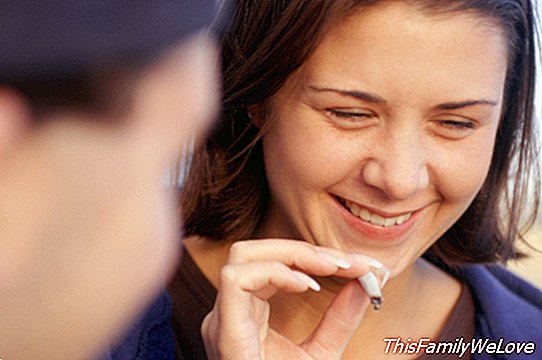Cannabis: myths and realities of consumption among adolescents
Spain is one of the European countries with the highest cannabis use among adolescents. Specifically, the age of initiation of cannabis use is between 13 and 15 years and for reasons of personal and cerebral maturation, young people under 20 years are more exposed to the negative consequences of cannabis use.
Cannabis comes from a plant called "cannabis sativa". Its active ingredient is tetrahydrocannabinol (THC) and is usually consumed in the form of a cigar, known as "porro", which is manufactured manually using marijuana (dried leaves) or hashish (solid resin) mixed with tobacco.
Although each person has different reasons to start using cannabis, the most frequent are: on the one hand, that the drug is available in the environment. On the other, certain "myths" that normalize consumption and make believe that there is no risk whatsoever.
The effects of cannabis among adolescents

Cannabis has immediate effects, derived from the fact of smoking, and others in the long term. Some factors such as the quantity, the concentration of THC, the biological constitution and other psychological characteristics of the person as positive expectations, the environment in which it is consumed, the previous state of mind and previous experiences directly influence the immediate effects. The most common are: hilarity, perceptual alterations, awkwardness, slowness, tachycardia, hunger and fatigue.
In the long term, the effects are:
- Dependence: around 10% of sporadic smokers develop dependency.
- Increased risk of respiratory diseases.
- Impairment of cognitive abilities: memory, attention and learning. This risk is higher when consumption begins in adolescence.
- "Amotivational syndrome": general disinterest in everything that surrounds him.
- Greater probability of psychiatric disorders in vulnerable people: psychosis, anxiety, depression.
- Social consequences: abandonment and school failure; problems of coexistence, irritability, discussions.
Sabrina Sánchez Quintero, clinical psychologist of the Program of Addictive Behaviors and Dual Pathology of the Psychiatry and Clinical Psychology Service HM Puerta del Sur, explains that "although a pattern of escalation that would start with tobacco and alcohol has been described, it would continue with cannabis and culminate with other substances (heroin or cocaine) do not necessarily occur in all those who smoke cannabis, many consumers close their cycle of consumption with abstinence and the adoption of healthy habits ".
Myths about cannabis
1. Cannabis is "natural". The fact that cannabis is extracted from a plant invites many people to say that it is "natural", but that does not mean that it is not harmful. In fact, not all "natural" is healthy, as hemp remembers that is a "natural" poison, and it is also known that plants and hashish are currently adulterated to modify the concentration of THC.
2. Cannabis "does not create addiction". Like all drugs, cannabis also generates dependence, which manifests itself when it occupies a central place in the adolescent's life, when it has tried to quit and does not achieve it, or when after leaving it it suffers many relapses. The psychologist Sabrina Sánchez Quintero states that "if when quitting smoking, symptoms such as irritability, anxiety, loss of appetite, increased consumption of tobacco, insomnia and difficulty in concentration, can be suspected a withdrawal cannabis dependence. Without a doubt, it's time to request an assessment and eventual professional help. "
Treatment to overcome cannabis addiction and advice for parents
In general, for adolescents it is difficult to recognize their addiction and many parents wonder how to act when they discover that their child is using cannabis. Approach and communication are fundamental between parents and adolescents. But also, the psychologist points out that "it is advisable to approach him calmly to ask him about his reasons for consuming, and at the same time, we must firmly convey the idea, today well contrasted, that consumption at that age has risks to his health. and that they do not approve it, if it's not enough, professional help can be offered. "
This professional help is available in different programs such as the Program of Addictive Behaviors and Dual Pathology of the Service of Psychiatry and Clinical Psychology HM Hospitales Puerta del Sur. They are aimed at adolescent patients with cannabis abuse and dependence, and based on treatments inspired by successful programs in other European countries. The approach is customized and adapted to the needs of each case, and includes pharmacological and psychotherapeutic treatments in different formats. If the young person rejects the help, advice is also offered to "lost" parents.
Marisol Nuevo Espín
Advice:Sabrina Sánchez Quintero, clinical psychologist of the Program of Addictive Behaviors and Dual Pathology of the Service of Psychiatry and Clinical Psychology HM Hospitales Puerta del Sur.
More information in the book: Brain thieves. What every young person should know about drugs. Authors Tom Scott and Trevor Grice.




